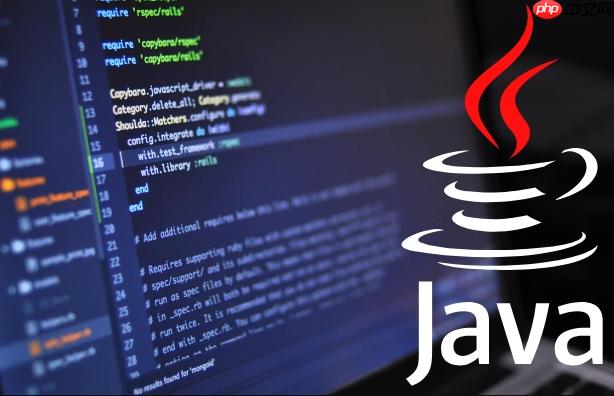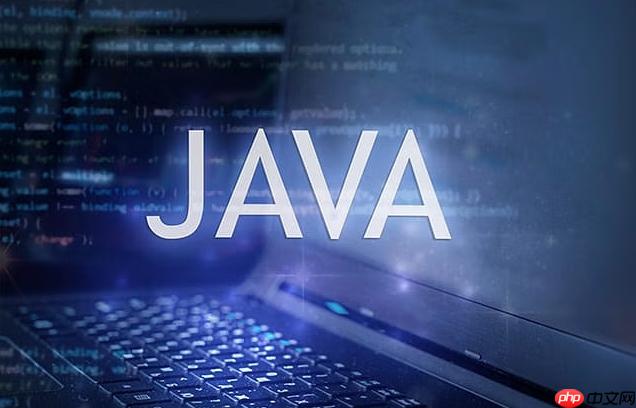在finally块中抛出异常会覆盖原始异常,导致调试困难。1. finally块中的异常会取代try或catch块中的原始异常,使其被丢弃;2. 被抑制的异常可通过getsuppressed()方法访问,用于诊断完整错误信息;3. 避免该问题的方法是在finally块内使用try-catch捕获异常,并通过addsuppressed()保留原始异常信息;4. 在异常处理中调用getsuppressed()可获取所有被压制的异常,帮助定位问题根源。

在finally块中抛出异常会使得原始异常信息丢失,这可能是个隐藏的雷区。finally的设计初衷是为了确保关键资源清理等操作一定会被执行,但如果finally本身出了问题,事情就变得复杂了。getSuppressed()方法则允许我们访问那些被压制的异常,这对于诊断问题至关重要。

解决方案:

在finally块中抛出异常,原始异常通常会被覆盖。这意味着,如果try块或catch块中抛出了异常,但在finally块中又抛出了新的异常,那么只有finally块中的异常会被传播,而原始异常则会被丢弃。这会导致调试困难,因为你看到的错误信息可能并非问题的根源。
被抑制的异常(Suppressed Exceptions)可以通过Throwable.getSuppressed()方法获取。当一个异常阻止了另一个异常的传播时,后者就被称为被抑制的异常。例如,在try-with-resources语句中,如果close()方法抛出异常,而try块中也抛出了异常,那么close()方法抛出的异常就会被抑制。getSuppressed()返回一个Throwable数组,包含了所有被当前异常抑制的异常。

这涉及到Java异常处理的机制。当try或catch块抛出异常时,JVM会寻找合适的catch块来处理它。如果找到了,catch块执行完毕后,会执行finally块(如果存在)。如果finally块也抛出了异常,那么这个新的异常会取代之前的异常,成为最终被抛出的异常。这种设计是为了确保finally块的执行,即使这意味着覆盖了原始异常。但从调试的角度来看,这并不总是理想的。
考虑以下代码:
public class FinallyExceptionExample {
public static void main(String[] args) {
try {
System.out.println("Try block executing...");
throw new Exception("Original exception");
} catch (Exception e) {
System.out.println("Catch block executing...");
throw new RuntimeException("Exception in catch", e);
} finally {
System.out.println("Finally block executing...");
throw new NullPointerException("Exception in finally");
}
}
}在这个例子中,try块抛出一个Exception,catch块捕获它并抛出一个RuntimeException,而finally块抛出一个NullPointerException。最终,只有NullPointerException会被抛出,而原始的Exception和RuntimeException的信息都会丢失。
避免finally块中的异常覆盖原始异常的关键在于谨慎处理finally块中的代码,尽量避免在其中抛出异常。如果必须在finally块中执行可能抛出异常的操作,应该使用try-catch块来捕获并处理这些异常,而不是让它们传播出去。
一个更安全的方法是:
public class FinallyExceptionSafeExample {
public static void main(String[] args) {
Exception originalException = null;
try {
System.out.println("Try block executing...");
throw new Exception("Original exception");
} catch (Exception e) {
originalException = e;
System.out.println("Catch block executing...");
//throw new RuntimeException("Exception in catch", e);
throw e;
} finally {
System.out.println("Finally block executing...");
try {
// 可能会抛出异常的操作
// 例如:关闭资源
//resource.close();
throw new NullPointerException("Exception in finally"); // 模拟异常
} catch (Exception e) {
if (originalException != null) {
originalException.addSuppressed(e);
throw new RuntimeException(originalException); //重新抛出原始异常,并附加被抑制的异常
} else {
throw new RuntimeException(e); //直接抛出finally中的异常
}
}
}
}
}在这个改进后的例子中,finally块中的代码被包裹在一个try-catch块中。如果finally块中的代码抛出异常,它会被捕获,并作为被抑制的异常添加到原始异常中。然后,原始异常会被重新抛出,这样就不会丢失原始的异常信息。
getSuppressed()方法允许我们访问那些被压制的异常,这对于诊断问题至关重要。当你在catch块中捕获异常时,可以使用getSuppressed()方法来查看是否有任何被压制的异常。这可以帮助你了解异常发生的完整上下文,并更好地定位问题的根源。
例如:
public class SuppressedExceptionExample {
public static void main(String[] args) {
try (Resource resource = new Resource()) {
resource.operate();
} catch (Exception e) {
System.err.println("Caught exception: " + e.getMessage());
Throwable[] suppressed = e.getSuppressed();
if (suppressed != null && suppressed.length > 0) {
System.err.println("Suppressed exceptions:");
for (Throwable t : suppressed) {
System.err.println("\t" + t.getMessage());
}
}
}
}
static class Resource implements AutoCloseable {
public void operate() throws Exception {
throw new Exception("Exception during operation");
}
@Override
public void close() throws Exception {
throw new Exception("Exception during close");
}
}
}在这个例子中,Resource类的operate()方法和close()方法都会抛出异常。由于使用了try-with-resources语句,close()方法抛出的异常会被抑制。在catch块中,我们使用getSuppressed()方法来访问被抑制的异常,并将其打印出来。这样,我们就可以看到operate()方法和close()方法都抛出了异常,从而更好地了解问题的全貌。
以上就是finally块中抛出异常会发生什么?被抑制的异常(Suppressed)如何通过getSuppressed()获取?的详细内容,更多请关注php中文网其它相关文章!

每个人都需要一台速度更快、更稳定的 PC。随着时间的推移,垃圾文件、旧注册表数据和不必要的后台进程会占用资源并降低性能。幸运的是,许多工具可以让 Windows 保持平稳运行。




Copyright 2014-2025 https://www.php.cn/ All Rights Reserved | php.cn | 湘ICP备2023035733号